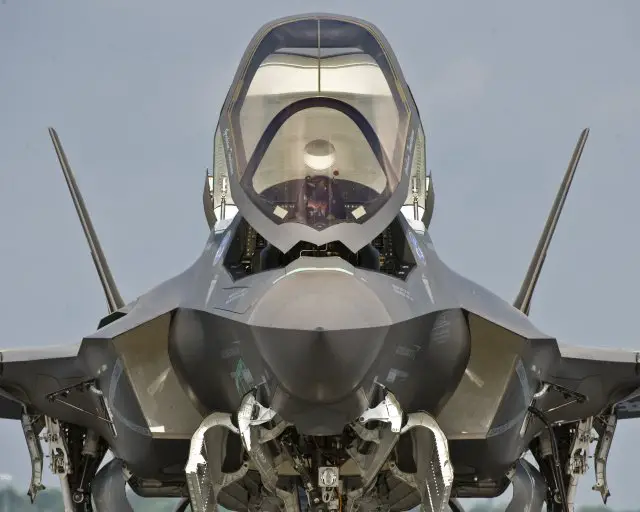Breaking news
Israel to receive its first two F-35A Lightning II fighter aircraft in December 2016.
| a | |||
| |
|||
World
Defense & Security News - Israel |
|||
| Israel to receive its first two F-35A Lightning II fighter aircraft in December 2016 | |||
Two
Lockheed Martin F-35A Lightning II Joint Strike Fighters (JSFs) will arrive
in Israel in December 2016, making the Israeli Air Force (IAF) the first
outside of the United States to receive the combat jet, a senior Lockheed
Martin official said Wednesday, April 15. |
|||
 Lockheed Martin F-35 Lightning II Joint Strike Fighter |
|||
Israel has ordered 33 additional F-35s and intends to
acquire another 17 in the coming years, to form two full squadrons.
IAF sources said that a squadron commander and five pilots from Nevatim Air Base in southern Israel have been selected to become the country's first F-35 pilots and instructors. In an event for reporters at Nevatim, the IAF unveiled a new F-35 demonstrator provided by Lockheed, which IAF officials said will shorten the process of absorbing the new platform. Although not a full flight simulator, the demonstrator allows pilots to become better acquainted with the plane, its software, targeting and avionics, said Brig.-Gen. Leehu Hacohen, commander of Nevatim. More than 200 F-35s are expected to have been produced by 2016 and 350 aircraft will be made by the end of 2018, said Steve Over, director of F-35 International Business Development, who is visiting Israel along with other senior Lockheed representatives. Alan Norman, Lockheed Martin's chief F-35 test pilot, said the F-35 will enable Israeli pilots to approach targets without being seen, gather intelligence, and attack air and ground threats simultaneously. "It's easy to fly," he said, according to Jane's. "The pilot is no longer a technician. He can truly be a tactician by focusing on bringing weapons systems into a battle arena." "It's not invisible, but it can operate in a battlespace with impunity," Norman said. "It will know where threat radars are, hundreds of miles away, and decide to either avoid or kill the threats. The sensors actively look for surface and airborne radars. It will locate threats without transmitting electrons off the plane." |
|||



















